My first forest village of the 17th century. Incredible emotions and real experience
Good mood to you, dear readers of our Kopar blog. Yesterday I had a very interesting and emotionally exciting cop in the autumn forest. Therefore, I want to share this story with you.
Background. I began to master forest digging from the very first year of my passion for instrument search. But all these were unsuccessful walks through the thickets of undergrowth and wading through dead wood fallen by a windfall. And I don’t even want to remember the glades overgrown with nettles as tall as a man. So, like many diggers, like me, the desire to dig in the forest quickly disappeared. And only last year, I managed to find a very interesting forest, with a large number of coins and finds from the 18th and 19th centuries. But this was a forest that had once, in the past, been an arable field. So it was actually the same field cop.
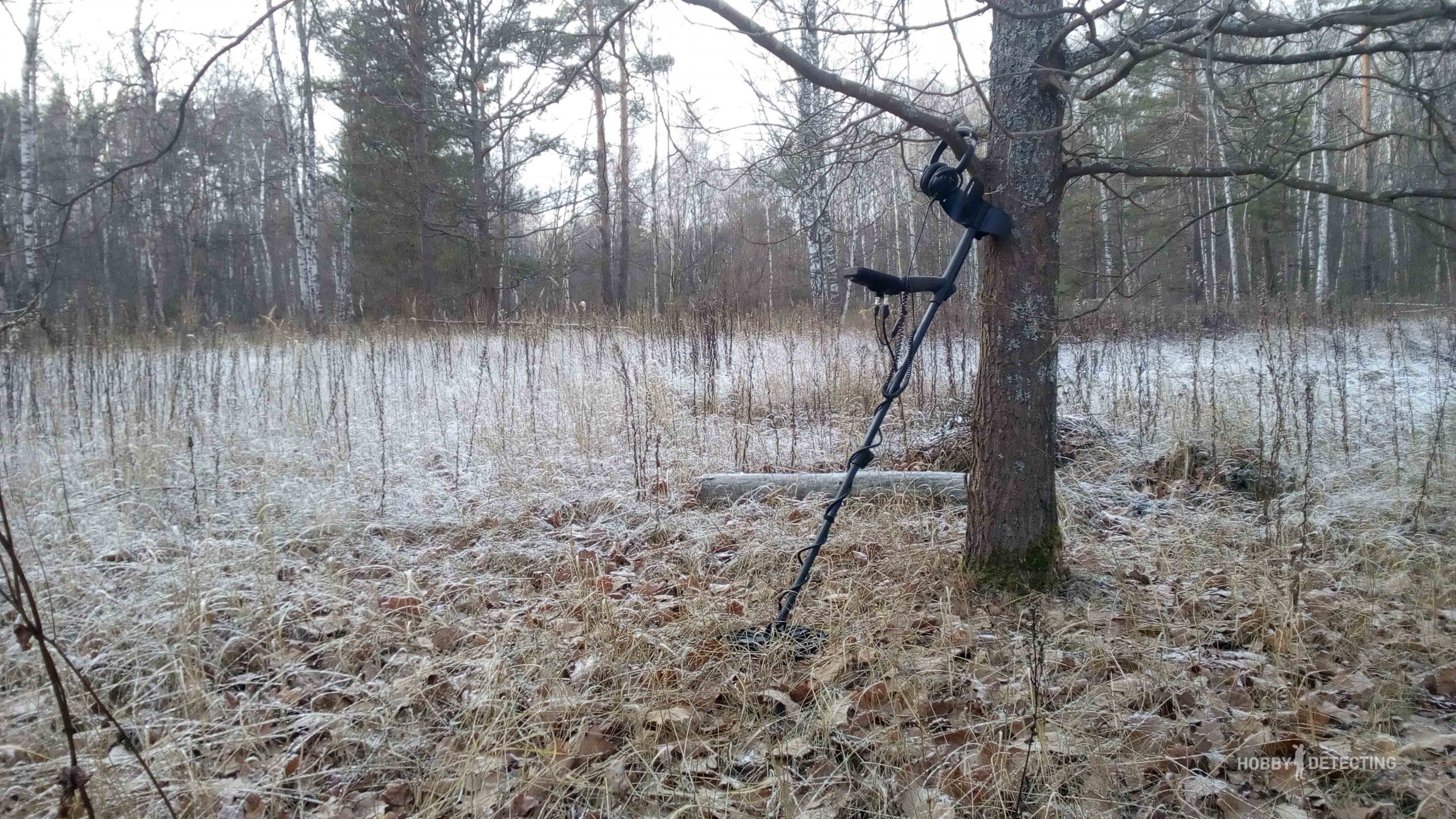
Motivation. I have long noticed that the search for new places to dig causes me more emotions than the technical process of digging in an explored place. But I still feel drawn to the forest. Copping in the forest is like playing a computer game on the highest difficulty. So I periodically go out into the forest. I will make a separate note about how I recently looked for the hermit monks’ monastery, but for now I’ll tell you about yesterday’s departure. You need to understand that going into the forest without strong motivation is useless and a waste of time.
Search and selection of location. Here you need to understand and know history well. It’s a hackneyed phrase, but I just want to tell you what it looks like in our area. Everyone knows the axiom that on the territory of the Russian plain people settled along the banks of rivers, rivulets and streams. Yes, this is true, but not in the Middle Ages. In our area this is true. Because in winter the Tatars raided the rivers, and in the summer tax collectors from Moscow sailed. Moreover, they hid from the tax authorities more than from the Tatars. So, medieval settlements in our area were located deep in the forests. But where exactly, I spent a very long time trying to understand the logic. And I will definitely talk about this in one of the following posts. I will say that for this trip, I took the advice of one little-known blogger on YouTube. And for reconnaissance I chose a part of a mixed forest with a large predominance of pine trees. It was not difficult to determine such a place. On the Yandex satellite map, the forests of our area are recorded in winter.
Departure and cop. I left, got to a clearing in the forest that I knew from mushroom places, took off my covers, got ready and went. There was a very good and well-trodden forest road leading to the pine forest I needed. Therefore, there was no need to wade through the windbreaks. On the contrary, along the route, I periodically looked out for interesting places along the road and turned off to wander through the forest hills. Spent shell casings, a penknife and a broken horseshoe. All this is a standard set of any forest that is an hour’s drive from a populated area.

I got to the area of the forest I needed and everything really looked very promising. The trunks of the pine trees are larger than the girth of your arms. A very old forest. There is practically no undergrowth. I walk around, looking for signals. But they are not there. Absolutely not. You won’t believe this, it doesn’t happen, but there wasn’t even Soviet-era iron in this forest. More than an hour passed without a single signal. The only non-ferrous metal is cigarette foil. I began to get irritably angry, and, first of all, at that same little-known blogger from YouTube. Well, well, his advice is to choose places like these. Who else is to blame, I listened to his advice, but there is nothing here.
I had to leave, move to the car. Halfway into the forest I saw a freshly plowed field. It will definitely be interesting there. I’m walking along the edge of a pine forest and clearing, and there’s a good iron signal at the roots of a large pine tree. I’m digging, and there’s a squiggle on the leg. Damn it's a sickle!!! Moreover, it is a very old sickle, exactly from the Middle Ages. And then experience worked. I begin to use a spiral to nurse the spot where the sickle was found, and literally a meter from the first find there is a signal. I dig, and there is a nail and a piece of ceramic. This is where the realization came. Found!!!
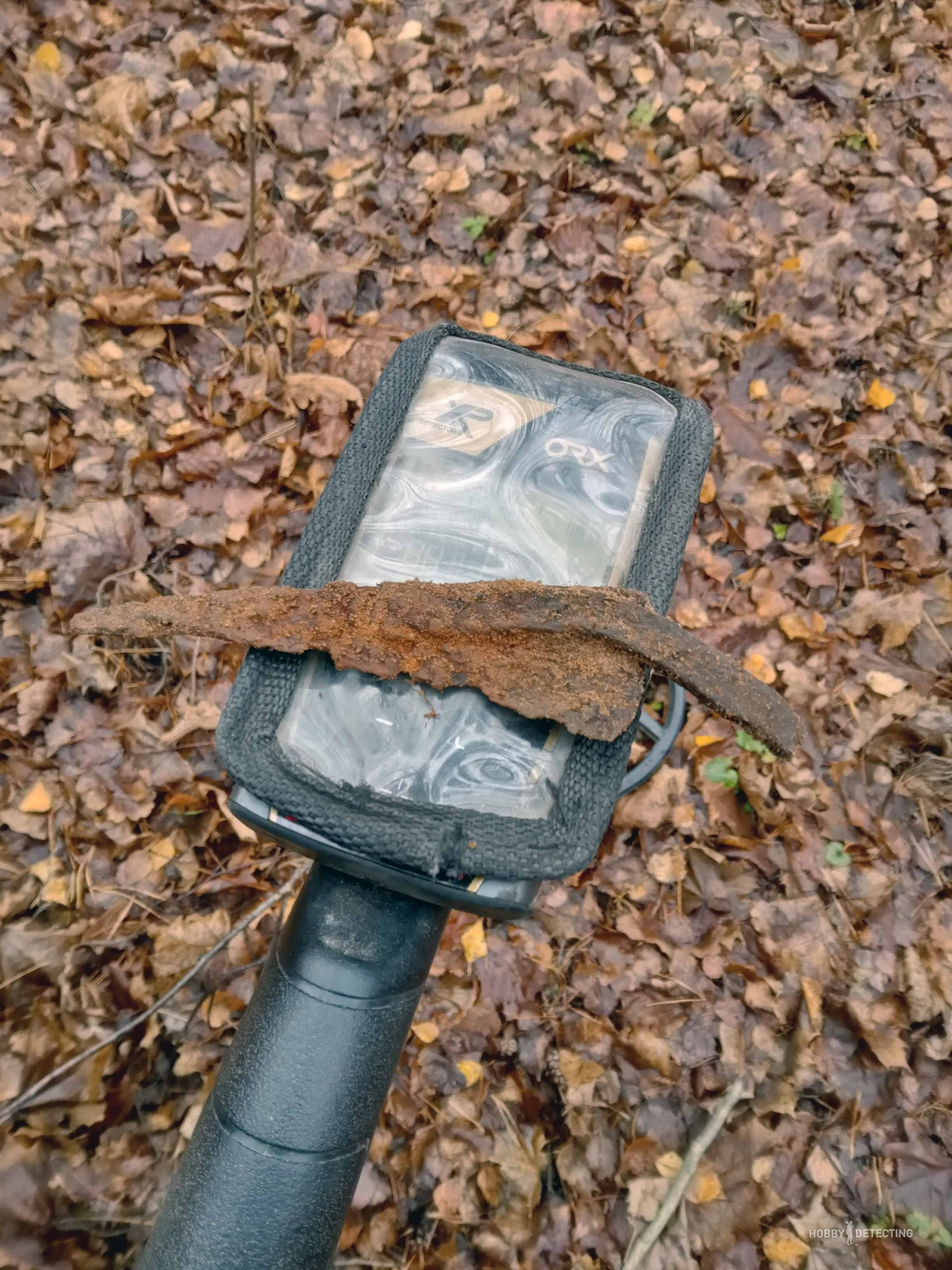

Result. He started walking around and digging for all the signals. I looked at the iron fragments and remembered them for myself, so that in the future, when searching for new places, I would know what finds there might be in the settlements. After all, sickles will not always fall out the first time.
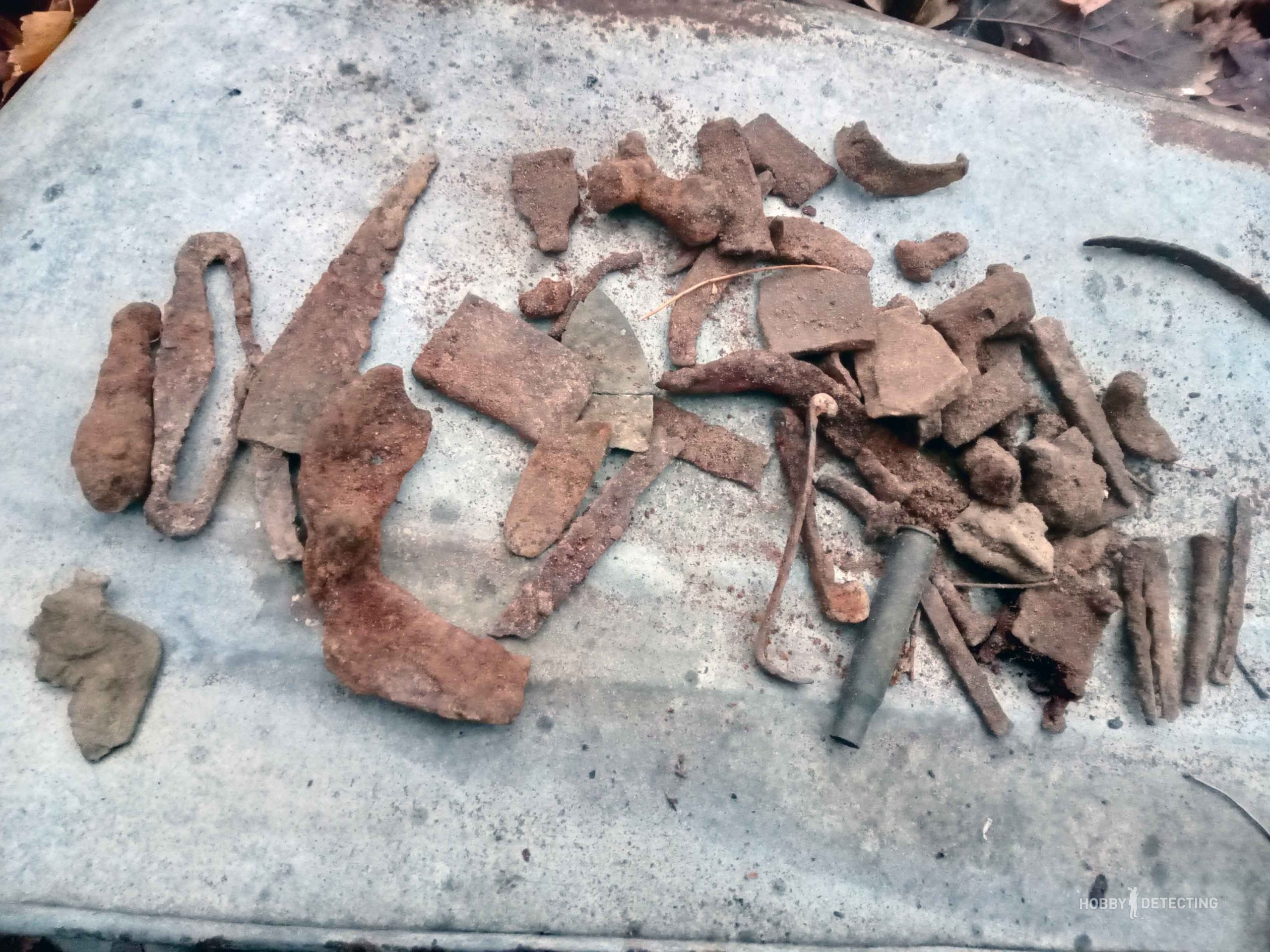
Ten minutes later, the first qualifying color signal, heart in heels, excitement and jitters. I dig, and there is pain and disappointment. Fragment of a medieval arched icon. I combed everything meticulously with a device three meters from the hole; no other pieces of the icon were found. Oh, if only this icon could be found intact. There I would dance with joy under the centuries-old pines. But the reality is cruel…

I'm going to dig further. I determine the boundaries of the village and here, as a reward, is an arrowhead. The tip was universal and could be used both for hunting and against a lightly protected enemy.
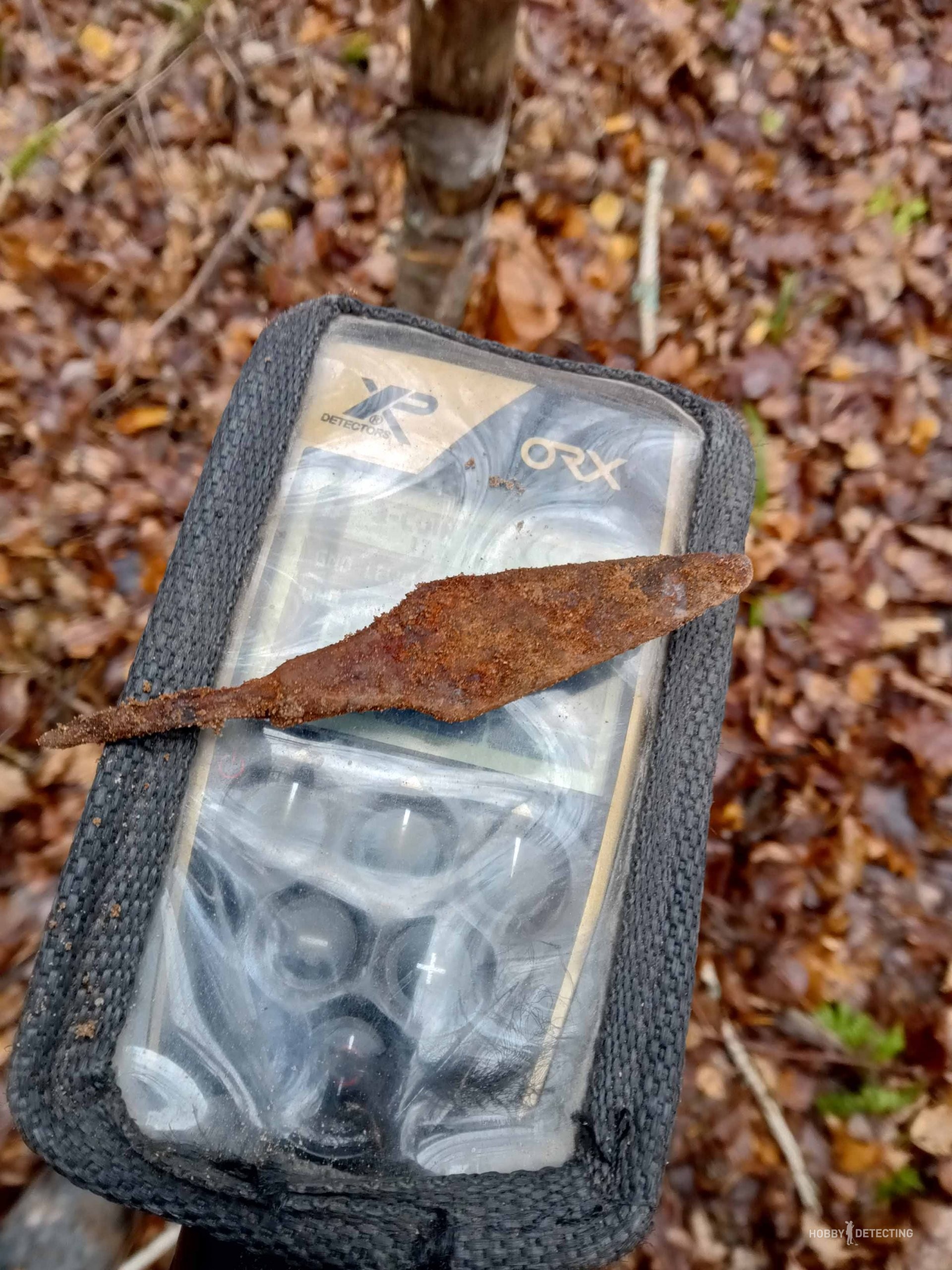
I dig further. Another arrowhead, this undoubtedly increased the interest in digging for all the iron signals in this place.

I dug in allmetal mode. Therefore, I understood another color signal only when I held it in my hands. The cross, judging by the type, is from the 16th-17th century.
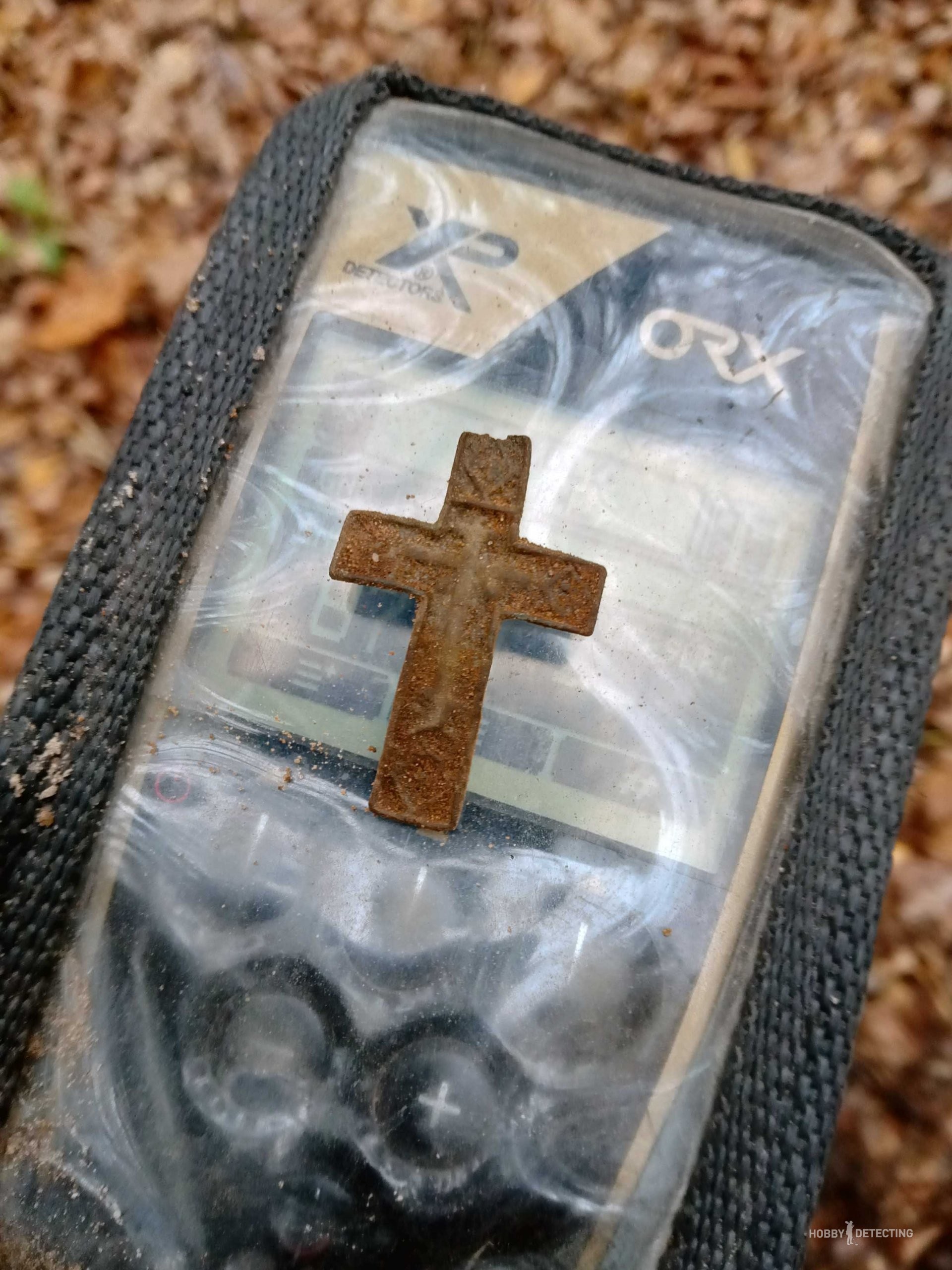
But I identified another find, but not right away. The pommel of the flail. Hmm… maybe there was a bandit camp here and the bandit treasure was buried somewhere nearby???

Then there were a couple of rings with a plot, and here is another color signal. I’m digging, and there’s just a magnificent penny from Mikhail Fedorovich. Based on this find, the dating of the settlement could be clearly substantiated.
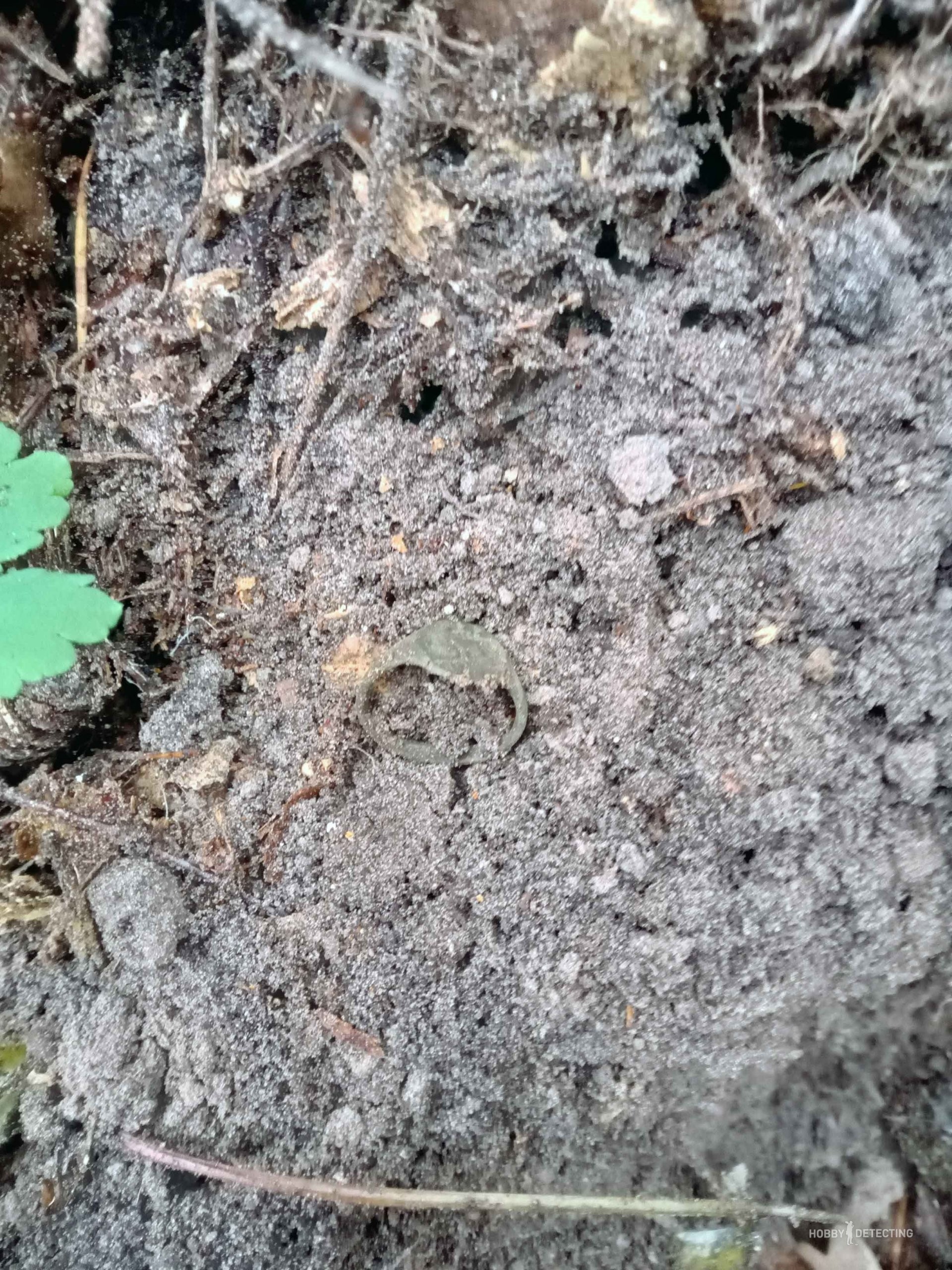

Bottom line. Judging by the size and properties of the finds. This place is not quite a settlement in the traditional sense. Most likely it was a place of summer residence or temporary stay. No large iron was found, not counting the driveshaft and ZIL wheel. You can dig and tend this place for a long time, three or four trips – that’s for sure. And what can you find there? The question is interesting, and therefore I will definitely go there in the near future.
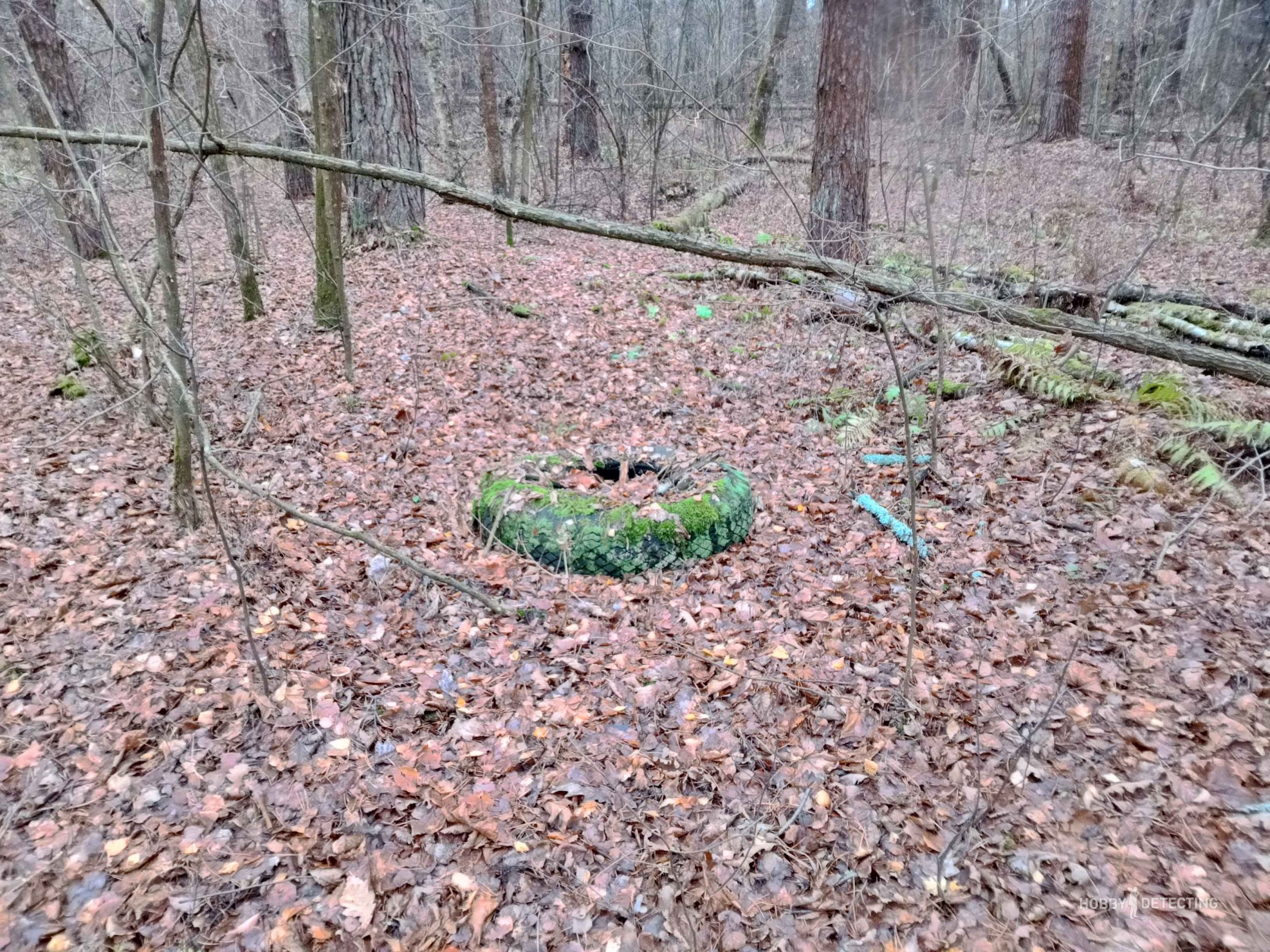
Thank you for attention. If you liked the note, please like and subscribe to our channel. And I, for my part, promise to publish interesting notes on the topic of instrument search.

I apologize for the weak photo, as I took the photo at dusk
